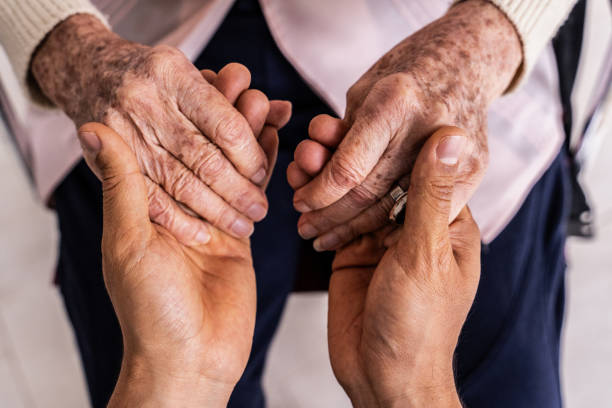When serious illness shifts the focus from curing to caring, many families find themselves navigating difficult decisions about end-of-life support. Palliative and hospice care at home offer compassionate, patient-centered solutions that prioritize comfort, dignity, and quality of life. Rather than seeing these services as giving up, they can be a profound way to honor a person’s final chapter with care that meets both physical and emotional needs.
Contents
- 1 Understanding the Difference Between Palliative and Hospice Care
- 2 Why Home-Based Care Matters
- 3 The Core Services Provided at Home
- 4 Supporting the Family Through the Journey
- 5 The Emotional Impact of Comfort-Focused Care
- 6 When to Consider At-Home Palliative or Hospice Care
- 7 A Compassionate Path Forward
Understanding the Difference Between Palliative and Hospice Care
Palliative care is specialized medical care for people living with serious illnesses, provided alongside curative treatments. Its goal is to alleviate symptoms such as pain, fatigue, or shortness of breath while addressing emotional and spiritual needs. Patients in palliative care may continue receiving aggressive treatments for their condition, but they benefit from an added layer of support designed to enhance day-to-day comfort.
Hospice care, on the other hand, is reserved for individuals nearing the end of life—typically with a prognosis of six months or less if the illness follows its usual course. At this stage, the emphasis shifts entirely to comfort, symptom management, and emotional well-being, without curative treatments. Both approaches share the philosophy of improving quality of life, but they differ in timing and medical objectives.
Why Home-Based Care Matters
For many patients, home is more than a physical space—it’s where they feel most at ease. Being surrounded by familiar sights, sounds, and loved ones can ease the anxiety that often accompanies advanced illness. Home-based palliative and hospice care allows individuals to receive medical attention, pain management, and emotional support without the disruption of frequent hospital visits.
Home care also supports family involvement. Relatives are not just visitors but active participants in the patient’s care, learning to manage symptoms, provide comfort, and maintain dignity. This shared role often creates moments of connection and closure that are deeply meaningful for both patient and family.
The Core Services Provided at Home
Palliative and hospice teams work collaboratively to meet diverse needs. Care often includes:
- Medical Management – Skilled nurses and physicians address pain, nausea, breathing difficulties, and other symptoms to promote maximum comfort.
- Emotional and Spiritual Support – Counselors, chaplains, and social workers help patients and families process emotions, explore personal values, and navigate difficult conversations.
- Practical Assistance – Home health aides assist with daily activities such as bathing, dressing, and meal preparation, ensuring comfort and dignity are preserved.
- Care Coordination – The care team communicates with primary physicians, specialists, and family members to ensure consistent and informed care.
This holistic approach ensures that comfort is addressed from multiple angles—physical, emotional, and spiritual.
Supporting the Family Through the Journey
Palliative and hospice care recognize that illness affects more than just the patient. Families often bear emotional and logistical burdens, balancing caregiving responsibilities with their own grief and fatigue. At-home support services can include respite care, giving family members time to rest and recharge, as well as bereavement counseling that continues after a loved one’s passing.
Education is another vital component. Care teams teach families how to manage medications, recognize signs of distress, and respond effectively to changes in the patient’s condition. This guidance empowers families and reduces feelings of helplessness during a difficult time.
The Emotional Impact of Comfort-Focused Care
When medical interventions are no longer the priority, care takes on a different meaning. Comfort-focused support allows patients to spend their final days or months in ways that matter most to them—sharing meals with family, enjoying favorite music, or simply resting in peace.
For many, home-based palliative and hospice care also creates a sense of control. Patients can decide who visits, how their space is arranged, and what daily routines look like. This autonomy can be especially valuable in preserving dignity and reducing stress.
When to Consider At-Home Palliative or Hospice Care

Choosing when to transition to palliative or hospice care is a deeply personal decision. Signs that it might be time to explore these services include:
- Frequent hospitalizations or emergency visits for symptom control
- Increasing difficulty with daily activities
- Pain or symptoms that are not well-managed by current treatments
- A desire to focus more on quality of life than aggressive medical intervention
Discussing these signs openly with healthcare providers can help determine the right timing and approach for care.
A Compassionate Path Forward
Palliative and hospice support at home is not about hastening the end—it’s about making the journey as comfortable, meaningful, and dignified as possible. It offers patients a chance to remain in a familiar environment surrounded by loved ones, while ensuring that medical, emotional, and spiritual needs are met with expertise and compassion.
When comfort matters most, choosing care that honors both the patient’s wishes and their humanity is one of the most profound decisions a family can make.

